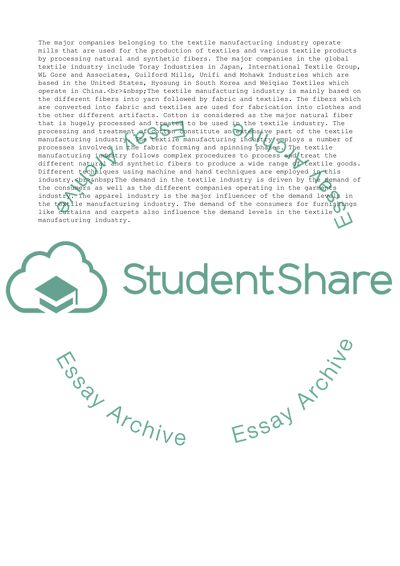Cite this document
(“Textile Manufacturing Industry in the USA Essay”, n.d.)
Textile Manufacturing Industry in the USA Essay. Retrieved from https://studentshare.org/business/1627833-report-about-textile-manufacturing-industry
Textile Manufacturing Industry in the USA Essay. Retrieved from https://studentshare.org/business/1627833-report-about-textile-manufacturing-industry
(Textile Manufacturing Industry in the USA Essay)
Textile Manufacturing Industry in the USA Essay. https://studentshare.org/business/1627833-report-about-textile-manufacturing-industry.
Textile Manufacturing Industry in the USA Essay. https://studentshare.org/business/1627833-report-about-textile-manufacturing-industry.
“Textile Manufacturing Industry in the USA Essay”, n.d. https://studentshare.org/business/1627833-report-about-textile-manufacturing-industry.


